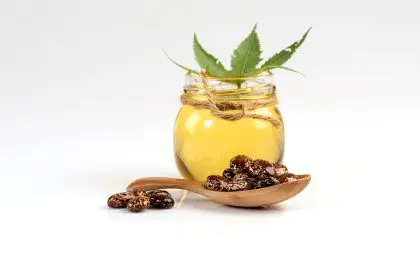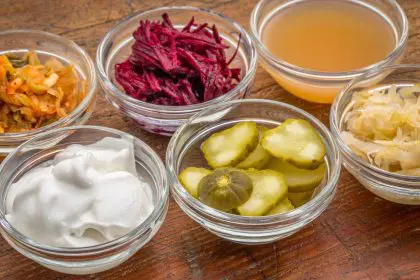We live in a world full of toxins. They’re in the air we breathe, the water we drink, the food we eat, and even the products we put on our skin. While it’s impossible to avoid these completely, your body has an amazing ability to process and eliminate harmful substances. This natural detoxification system works around the clock to keep you healthy, but modern lifestyles can overwhelm these processes, potentially contributing to long-term health problems.
The good news? You don’t need expensive juices, supplements, or extreme diets to detox effectively. Your body already knows how to cleanse itself. What it needs is your support through everyday habits that enhance its natural detoxification pathways. Let’s explore how optimizing your body’s built-in detox systems might be your best defense against chronic illness.
Understanding your body’s filtration system
Before diving into detox strategies, it’s worth understanding the sophisticated cleansing system already operating inside you. Your body has multiple organs and systems dedicated to filtering out toxins and waste products.
Your liver stands as the chief detoxification organ, transforming harmful substances into water-soluble compounds that can be eliminated. This two-phase process neutralizes everything from alcohol and medications to environmental toxins and metabolic waste. When your liver functions optimally, it efficiently processes these toxins before they can accumulate and cause damage.
Your kidneys act as powerful filters, removing waste products and excess substances from your bloodstream. Every day, these fist-sized organs filter about 200 quarts of blood, extracting waste and extra water to create urine. Proper kidney function prevents the buildup of harmful substances that could otherwise reach toxic levels.
The digestive system plays a crucial role in detoxification beyond just eliminating solid waste. Your intestinal tract hosts trillions of bacteria that help break down toxins. The gut lining also acts as a barrier, preventing harmful substances from entering your bloodstream while allowing nutrients to pass through.
Your lungs expel gaseous waste products with each exhale, particularly carbon dioxide. They also contain specialized cells and tiny hair-like structures that trap and remove airborne particles and pathogens before they can enter deeper tissues.
Your skin, the largest organ in your body, eliminates certain toxins through sweat. While sweating primarily regulates body temperature, it also removes small amounts of heavy metals and other unwanted compounds.
The lymphatic system serves as your body’s drainage network, collecting and filtering fluids that contain cellular waste, pathogens, and damaged cells. Unlike your circulatory system, the lymphatic system doesn’t have a pump, relying instead on body movement to flow properly.
Signs your detox systems need support
Your body sends signals when its natural detoxification processes are struggling to keep up. These aren’t always dramatic symptoms but rather subtle indicators that your internal cleaning crew needs reinforcement.
Persistent fatigue that doesn’t improve with rest may indicate your body is working overtime to process toxins. This energy drain happens because detoxification requires significant metabolic resources, leaving less energy available for other functions.
Digestive issues like bloating, gas, constipation, or diarrhea often point to an overtaxed digestive tract. These symptoms can indicate your gut microbiome is imbalanced or that your intestinal detoxification pathways aren’t functioning optimally.
Skin problems including acne, rashes, or dullness sometimes emerge when your body attempts to eliminate toxins through the skin because other pathways are overloaded. Your skin often reflects your internal health status.
Brain fog or difficulty concentrating can result from toxins affecting your nervous system. When detoxification pathways struggle, certain compounds can impact cognitive function and neural communication.
Frequent headaches might stem from the body’s reaction to various toxins or the byproducts created during incomplete detoxification processes. They can also signal dehydration, which hampers toxin elimination.
Unexplained weight fluctuations, particularly resistance to weight loss despite diet changes, can be related to toxin storage in fat cells. Your body sometimes sequesters certain toxins in fat tissue as a protective mechanism.
Sleep disturbances often occur when detoxification processes are compromised. Many critical cleansing activities happen during sleep, and toxin buildup can disrupt sleep quality and duration.
Daily habits that enhance natural detoxification
Supporting your body’s detox systems doesn’t require extreme measures. Consistent, moderate approaches often yield the best long-term results for preventing illness.
Hydration stands as perhaps the simplest yet most powerful detox supporter. Water helps flush toxins through your kidneys, moistens mucous membranes that trap pathogens, supports lymphatic flow, and enables every cellular process involved in detoxification. Aim for at least eight glasses daily, with more during exercise or hot weather.
Dietary fiber works like an internal broom, binding to toxins in your digestive tract and escorting them out of your body. It also feeds beneficial gut bacteria that help with detoxification. Vegetables, fruits, legumes, nuts, seeds, and whole grains provide fiber that supports healthy elimination and prevents toxin reabsorption.
Antioxidant-rich foods neutralize free radicals and support liver function. Colorful fruits and vegetables provide plant compounds that activate detoxification enzymes. Berries, leafy greens, cruciferous vegetables like broccoli and Brussels sprouts, garlic, turmeric, and green tea are particularly effective at enhancing your body’s detox capabilities.
Movement stimulates lymphatic flow, increases circulation to detox organs, enhances breathing rate, and promotes healthy sweating. You don’t need intense workouts to get these benefits. Walking, yoga, swimming, or any activity you enjoy consistently will support your body’s natural cleansing processes.
Adequate sleep gives your brain and body the opportunity to perform critical cleanup operations. During deep sleep, your brain activates its glymphatic system, which clears out metabolic waste products that accumulate during waking hours. Prioritizing seven to nine hours of quality sleep nightly supports these essential maintenance functions.
Stress management directly impacts detoxification efficiency. Chronic stress increases inflammation and redirects energy away from detox processes. Practices like meditation, deep breathing, time in nature, or any relaxing activity you enjoy can help maintain the biochemical balance needed for optimal detoxification.
Reducing toxic input lightens the load on your detox systems. Choose organic produce when possible, filter your drinking water, use natural cleaning and personal care products, avoid plastic food containers, and be mindful of air quality in your home and workplace. Small changes add up to significantly reduced toxic burden over time.
Intermittent fasting gives your digestive system regular breaks, allowing more energy to be directed toward cellular repair and toxin processing. Even short fasting periods of 12-16 hours between dinner and breakfast can support metabolic flexibility and enhance cellular cleanup mechanisms.
The liver-supporting kitchen
Your liver bears the brunt of detoxification work, so giving it extra support makes sense for preventing long-term illness. Certain foods contain compounds that directly enhance liver function.
Cruciferous vegetables like broccoli, cauliflower, Brussels sprouts, and cabbage contain glucosinolates that help activate phase 2 liver detoxification enzymes. These compounds help your liver transform toxins into water-soluble substances that can be eliminated. Aim to include some form of cruciferous vegetable in your diet daily.
Garlic and onions provide sulfur compounds that boost liver enzyme production and help thin mucus in the lungs and digestive tract. These pungent foods also support healthy gut bacteria that assist with detoxification. Don’t be shy with these flavor-enhancing ingredients in your cooking.
Leafy greens provide chlorophyll, which may help neutralize certain environmental toxins. They’re also rich in fiber and nutrients that support overall detoxification. Spinach, kale, arugula, dandelion greens, and other leafy vegetables deserve a prominent place on your plate.
Herbs and spices like turmeric, milk thistle, dandelion, and cilantro have traditional uses as detoxifiers that modern research increasingly supports. Turmeric’s active component, curcumin, has liver-protective effects and anti-inflammatory properties. Milk thistle contains silymarin, which helps regenerate liver cells and protect them from damage.
Citrus fruits contain d-limonene, a compound that activates liver enzymes and helps flush toxins. The vitamin C in citrus also acts as an antioxidant that supports overall detoxification. A squeeze of lemon in your morning water or grapefruit with breakfast offers simple liver support.
Fermented foods like sauerkraut, kimchi, kefir, and kombucha provide beneficial bacteria that help break down toxins in your digestive tract. These probiotic foods also support gut barrier function, preventing toxins from entering your bloodstream in the first place.
Gentle detox practices for everyday life
Beyond diet, certain practices can enhance your body’s natural cleansing abilities without extreme measures.
Dry brushing stimulates your lymphatic system and removes dead skin cells. Using a natural bristle brush, gently stroke your skin toward your heart before showering. This simple practice improves circulation and may help your skin’s detoxification function.
Contrast showers alternate between warm and cool water, which can boost circulation and lymphatic flow. End your regular shower with 30 seconds of cooler water, gradually decreasing the temperature over time as you get used to the sensation.
Sauna sessions promote sweating, which helps eliminate certain toxins through the skin. The heat also increases heart rate and circulation similar to moderate exercise. If you have access to a sauna, start with short sessions and always rehydrate afterward.
Epsom salt baths provide magnesium, which supports hundreds of enzymatic reactions, including those involved in detoxification. The warm water also relaxes muscles, promotes circulation, and induces a mild sweating response. Add two cups of Epsom salts to your bath and soak for 20 minutes.
Deep breathing exercises increase oxygen delivery to cells and enhance the elimination of gaseous waste products. Practices like box breathing or diaphragmatic breathing activate your parasympathetic nervous system, which supports rest, digestion, and detoxification.
The bigger picture of prevention
Natural detoxification support goes beyond preventing the accumulation of environmental chemicals. It also addresses the broader concept of cellular cleanup, which has profound implications for long-term health.
Many chronic diseases share common threads of inflammation, oxidative stress, and cellular dysfunction. By supporting your body’s natural detoxification and repair mechanisms, you’re addressing these underlying factors that contribute to conditions like heart disease, diabetes, neurodegenerative disorders, and even some forms of cancer.
The cellular cleanup processes enhanced by natural detoxification practices influence how your genes express themselves, potentially reducing your risk of illness even if you have genetic predispositions. This emerging field of epigenetics suggests that lifestyle factors can significantly impact how your genetic code manifests in your body.
Rather than viewing detoxification as an occasional cleanse, approach it as an ongoing lifestyle that supports your body’s incredible self-healing capabilities. The consistent, gentle practices outlined above are more sustainable and effective than extreme detox protocols that often lead to rebound effects.
Remember that true prevention isn’t about quick fixes but rather the cumulative effect of daily choices that either support or hinder your body’s natural functions. By working with your built-in cleansing systems rather than against them, you’re laying the groundwork for resilient health that can withstand the challenges of modern living.














